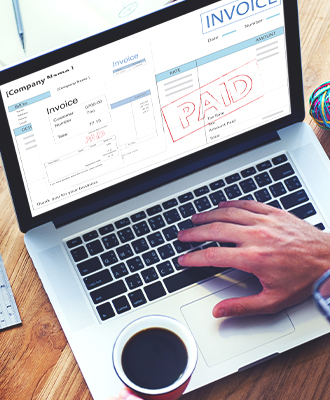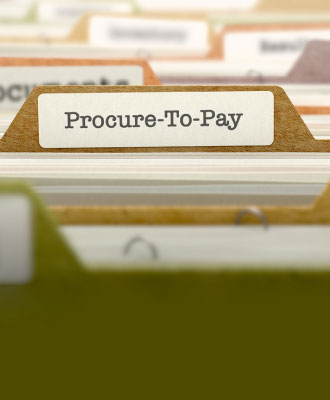How To Achieve An Accounts Payable Paperless Workflow
In the not so recent past, keeping the books for business has meant relying on a completely paper-based process that involved keeping track of all of your company’s financial data with pen and paper. And today’s digital age, bookkeeping and accounts payable and Compass much more than transaction records in a book.
It’s now possible to automate much of your accounts payable process with document scanning and capture, document management software, and more.
Without automation software, the paper process for your AP department includes mailing your purchase order to a vendor, waiting for the invoice to come, and then sending a check again via email after the goods have arrived or the services have been rendered. There’s plenty of room for bottlenecks throughout the process, causing payment delays.
Several people are involved in moving these documents from one stage to the next, not including the steps in between where a company’s internal policies played a role in approval processing. The more hands involved, the higher the chance of a mistake – from data entry errors, to things getting lost.
Even if your business uses accounting software, it’s still likely that the majority of your accounts payable process is paper-based and could benefit from implementing automation with a software solution.
“Eliminating paper processes saves the company time and money. The reduced error potential also helps to improve supplier relationships.”
Document Capture Software
The first part of accounts payable automation is document scanning or capture software. This is how you turn paper invoices and documents into electronic ones just start the process. In terms of AP department automation Solutions, using document capture software saves you the most time even when you already have an accounting software such as QuickBooks.
Capture software lays the foundation for an automated accounts payable process by classifying and indexing the documents then working in hand with your document management system and accounting software to streamline your business processes.
When you’re working with a fully automatic solution in this category, your team scans their paper documents and has nothing else to do until the data hits their queue in your document management system or accounting software
Classifying
Classifying refers to the process of automatically identifying document types such as purchase orders, invoices, packing slips, purchase requisition forms, receipts, bills of lading and more. The software determines what type of document is looking at and is capable of determining the difference between vendors and supporting documents before it decides what happens next.
Indexing
After the software determines the kind of document it’s looking at, indexes it and creates a road map that will help you search for the information later. Using identifying information such as invoice numbers, GL codes, purchase order numbers, vendor names, etc, the system indexes the document and your staff no longer has to manually enter the information.
Depending on your current workflow, the information is sometimes entered more than once. Using this approach saves your stuff a great deal of time because they don’t have to worry about tedious data entry.
Some solutions recognize types of documents and index data based on user input during the capture process. Though this may not save you a lot of time in the end, it certainly helps in converting your paper-based process to a paperless workflow.
Other solutions recognize document types and index data with little to no input from users which can save massive amounts of time for your AP department. While this solution alone could integrate directly into your ERP and your current accounting software, there’s another important piece of the automation puzzle.
Document Management Software
Document management software (DMS) extracts all of the information from a document and transfers it during export to your document management software that could be used to further automate your accounts payable processes including approval workflows, purchase order and invoice creation, email notifications, reporting, and more.
To take your accounts payable department paperless means letting go of paper-based activities everyday and instead converting office work flows to electronic systems.
Approval Processing
Clothes are an internal control within the software. By recognizing key data in determining the next steps, approval processing allows documents to move from point A to point B with the act of approval.
With an electronic approval process, the software handles all routing, notifications, deadlines, tracking, and post-approval actions while the office staff approves or rejects items as they appear in their queue.
At this point, a simple invoice approval process looks like this:
- An invoice is scanned and picked up by the capture software.
- The capture software classifies, indexes, and exports the document information to the document management system.
- Document management system routes invoice per the approval process where a manager approved it by clicking the approved button.
- The approved invoice and metadata is routed to the destination such as QuickBooks for payment processing.
In this example, there are only two steps where human interaction is necessary. After the document is physically scanned in all they have to do is click a single button to approve it.
This system makes it exponentially easier to Route documents through more than one user or approval group. Notifications and deadlines can ensure that everything moves along the approval process in a timely manner to prevent bottlenecks.
You can use the same workflows and notifications to help your team catch duplicate invoices. the system can capture emailed invoices automatically. And it’s possible to take advantage of invoices with an early payment discount so there is even greater potential for cost savings.
Three-Way Matching
It’s important to keep track of related documents and make sure they stay together before a payment can be processed. With three-way matching, a purchase order, a packing slip or receiving report, and a vendor invoice are compared to ensure you are only being charged for the items you received. It’s only when all three documents are present and the details of these documents match that the vendor’s invoice should be scheduled for payment.
Manual three-way matching has a great deal of error potential and can take a significant amount of time if the documents have to be tracked down.
Software can automate the matching process and provide alerts for users if anything is missing or doesn’t seem right. Users can also be alerted to impending deadlines to ensure that all invoices are paid in a timely manner to avoid late fees.
Even if there is not a workflow in place, three-way matching allows users to search for a PO number, a time frame, or a check number and see all of the related documents.
GL Coding
The general ledger is the core of any company’s accounting system. It is used to compile balance sheets and income statements which are two key financial statements for any organization. The GL contains user-defined account codes and a listing of the account names known as a chart of accounts, or COA. The process of classifying a transaction is referred to GL coding and when done manually, requires a lot of time.
Software solutions take the guesswork out of the process so there are no more manual coding errors or trying to find the right personnel to code new invoices. Basic software solutions give you a field where GL codes can be entered or selected from a drop-down list. More advanced solutions, such as PurchaseControl can automatically populate GL codes based on vendor or invoice categories.It’s also possible to use the static GL code or require the GL code to be entered upon approval and then auto-populate amounts against the GL code.
Accounting Software Integration
The last piece of the AP automation puzzle perfects the entire process by integrating all of your software solutions with your current accounting software or Erp. All the data that has been captured, index, and approved can now be sent to the accounting software you’re using so you don’t have to enter it again.
With recursive lookups, you can check your accounting system or ERP for updated information that can be applied to documents that are stored in your document management system.
For example, if you wanted to automatically match up checks that were just cut with their proper invoices, you can use recursive lookups to compare invoices that don’t have a check number. You can schedule the checks once a day to see if the application has issued a check number to apply to the invoice. When it finds a check number that exists, the number is added to the check number field for the corresponding invoice in the DMS so when you go back to your DMS to look at a check, you can see every invoice that was paid by that check.
Or if you want to be able to quickly and easily see the status of paid and not paid invoices, you can set it up so that once a day all invoices with a status field of “not paid” compare against accounting software to see if it has been paid.If the invoice has been paid, then the status field is updated accordingly.
With this approach, managers and Chief Financial officers (CFOs) can easily search what’s been paid between date ranges and they can also generate reports to include assignees, along with the stage the invoices in and view metrics that can help identify clogs in the system.
Going paperless can seem like a major undertaking but the hardest part is choosing the right software. Ultimately, all you’re looking to accomplish is to automate data entry, eliminate redundancies, streamline your approval processes, automate office workflows, centralized your related documents, and integrate with existing accounting software.
With PurchaseControl, you can set up the vendors and product catalogs you need, assign permissions to people based on what you want them to be able to do. You can set purchase limits, departmental budgets, approval based on purchase amount and so on.
For instance, when an employee creates a purchase requisition it can automatically be approved if it’s for certain items such as office supplies. For larger purchases, if you can go to the department head for approval. Once a purchase requisition is approved, it automatically converts to a purchase order and is sent to the vendor. Once the items are received, the purchase order automatically converts to an invoice so everything stays together and remains searchable.
PurchaseControl also includes an audit trail so you can see who to action on what and when. That way if there is an issue, you know who to speak to and it holds everyone in the company accountable. And, because you can attach documents to vendors, contracts are easily accessible to ensure everyone remains in compliance.
Save time and money with PurchaseControl’s paperless AP automation
Find Out How








